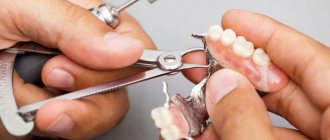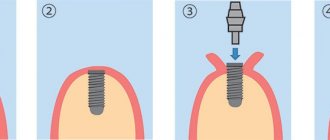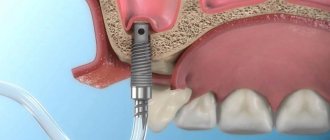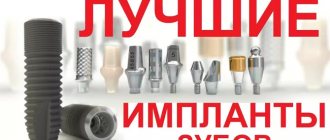Is it possible to smoke after treatment and filling of a tooth? Recommendations for different cases
Smoking is a harmful habit that is quite difficult to get rid of. Cigarettes, and especially the substances they contain, have a negative effect on the body as a whole. The vessels narrow, the cells receive little oxygen and nutrients. But the first place nicotine encounters is the oral cavity. All substances begin to be absorbed into the mucous membrane and also affect the tooth enamel. You can harm yourself even more if you start smoking immediately after filling a tooth. Below we will look in more detail at whether it is possible to smoke after filling and dental treatment.
Possibility of implantation in a smoking patient
Smokers have a chance of successful implantation under the following conditions:
- Choosing the appropriate type of implants. To avoid the development of inflammation in the area of osseointegration, it is necessary that this area is as deep as possible. The deepest fixation in the jaw is provided by basal implants, which are implanted not into the upper part, but into the lower layer of the jawbone. This type of implant is also most suitable for thinning bone tissue.
- Strict smoking cessation for a certain period of time before and after surgery. Moreover, from any type of smoking, including electronic cigarettes.
- Compliance with all doctor's prescriptions. The patient will have to not only carefully monitor oral hygiene, but also follow other recommendations. That is, take prescribed antibiotics in the prescribed course, antihistamines, specific vitamins to support immunity, etc.
The essence of the filling procedure
Filling is a specific method that helps restore the shape and function of a damaged tooth.
First of all, the dentist cleans the cavity of unnecessary substances, and then fills it with filling material.
Currently, technologies make it possible to reduce the likelihood of post-filling complications to zero. Dentists prefer to use gutta-percha-based materials. This is a special biological material that allows you to close any channel, regardless of its width and curvature. Preparing teeth for filling is carried out in the most usual way. The dentist performs mechanical expansion and frees the cavity from the affected tissue. This is followed by antiseptic treatment. The doctor uses disposable cellulose-based pins to accurately determine the length of the canal and then dry it.
How does nicotine affect teeth?
Before entering the lungs, tobacco smoke passes through the mouth, therefore affecting the lips, teeth and gums.
The following factors influence the condition of the oral cavity:
- Heat. Cigarette smoke enters the mouth of a smoker in a very hot state and affects the integrity of tooth enamel. Exposure to high temperatures may cause it to darken or crack.
- Nicotine and tobacco tars thin out bone tissue, including the jaw. In extreme cases, bone atrophy begins, due to which it will be impossible to install implants without additional bone augmentation procedures.
- Poor effect on the immune system. Nicotine often causes inflammation. Experienced smokers often develop osteomyelitis of the jaw. Often, an addiction leads to mucosal cancer.
- Smoking is one of the reasons for the rejection of dental implants, which can occur at any stage of using a prosthesis.
- When you regularly smoke tobacco products, a thick plaque forms on your teeth, which becomes a habitat for bacteria. Their vital activity disrupts the microflora of the oral cavity, weakening the entire dental system.
- Increased salivation, which irritates the oral mucosa and enamel. Often causes dental diseases.
What are the types of fillings and fillings?
Many patients are asked: “What fillings do you want to get?” And in order not to get into an awkward position, you need to understand what kind of fillings exist.
Keep in mind! In dentistry, they differ in composition and use:
- Plastic and ceramic. Plastic ones are the most popular because they are considered cheap and quick to install. Ceramic ones are harder and more reliable.
- Amalgam fillings. They contain silver, copper, zinc, mercury or tin. They are considered ductile, have high strength and can last for several years.
- Temporary and permanent. Temporary ones are used for long-term treatment, and permanent ones are used for instant treatment at a time.
Note! Modern medicine provides several types of materials for tooth filling.
Their main goal is to restore all processes. The material must be selected for the appropriate load:
- Filling of front teeth. Most often, teeth are destroyed due to caries in the front row. This procedure has its own indicators. To avoid future problems with chewing food, a specialist installs light-curing material.
- Filling using paste. Doctors quite often use pastes in their work. They are needed to seal the void after the inflamed pulp has been removed.
- Innovative filling. Such methods include canal sterilization, the use of hot or cold gutta-percha, mummification and retrograde filling.
Implantation recommendations for smokers
Not everyone is able to give up a bad habit and quit smoking. In any case, the doctor recommends eliminating tobacco consumption two weeks before installation of the implant and at least in the first month during the engraftment stage. If the patient is a heavy smoker, this fact must be taken into account and treatment adjusted. There are several recommendations that can minimize the harm of cigarettes and make treatment more predictable.
- It is recommended to install top systems with an advanced hydrophilic coating, which promotes the formation of bone tissue around the implant and accelerates osseointegration.
- Smokers are not recommended to carry out a one-stage implantation protocol, since in this case there is a high risk of implant rejection and the development of inflammation.
- Basal implantation. Basal implants are installed in deep layers of bone that are not subject to atrophy, which is a plus for a smoker. However, this method has its own nuances that must be taken into account.
- Smokers need more careful hygiene using an irrigator, and it is also recommended to make preventive visits to the doctor more often.
When can you smoke in different cases after treatment?
Stay up to date! Smoking affects tissue function and impairs regenerative function.
The recovery process is reduced, and a film with pathogenic microorganisms forms on the enamel. They cause secondary caries.
Now every second person turns to a dentist for help to have a tooth filled.
Smokers are not left out. Such people always have one question: “Can I smoke after filling a tooth and how long after can I light a cigarette?”
If the patient cannot resist this habit, then it is necessary to check with the doctor what material is used.
After cement filling
Cement-based material is cheap and short-lived.
For your information! It takes a very long time to harden and will not be able to prevent a new outbreak of caries. It is not recommended to smoke for about five hours.
Temporary plastic filling
Material prone to causing inflammation of the gums. In addition, it shrinks quickly and at the same time affects the shape and color of teeth during eating and smoking.
It is best to refrain from smoking for three hours, although in any case the fillings will lose their appearance.
Photopolymers (light fillings)
Photopolymer fillings are exposed to a special ultraviolet lamp to harden them.
Thanks to this treatment, you can eat and smoke immediately after rising from the dental chair.
Amalgam filling (metal filling)
You should know! This material is used very rarely, as it is toxic. Amalgam is made by mixing mercury and metal.
It is better to stop smoking after filling for a couple of hours to allow the tissues to recover.
Nicotine affects the degree of healing, so with any filling it is not recommended to smoke during the day.
Doctor's recommendations after removal
- 20 minutes after the operation, you need to remove the tampon soaked in antiseptic. During this time, the bleeding should have stopped and the wound should be disinfected. If you leave the tampon in longer, the accumulation of blood and saliva will make it an ideal environment for bacteria to grow.
- A blood clot forms at the wound site, which cannot be picked out and spat out, as it will affect the formation of bone tissue, but for now it will become a natural obstacle to bacteria.
- If you have been prescribed rinses, you need to do them very carefully so as not to wash out the blood clot. It is best to simply draw up the solution, hold it in the desired area for 2-3 minutes and spit. Too vigorous rinsing will damage the clot and slow recovery.
- Sometimes the dentist will apply medication to the socket to speed up healing. They also cannot be removed ahead of time.
- Teeth brushing and rinsing can be done one day after surgery. Only movements with the brush must be careful so as not to remove the blood clot.
- After a complicated wisdom tooth extraction, your dentist may prescribe antibiotics to prevent the infection from spreading. The patient needs to follow the treatment regimen.
- To relieve pain, it is better to apply ice to the cheek; if the pain does not subside, you can take a painkiller.
Does the restoration need to be changed and when might it be necessary?
On average, the service life of composite extensions is about 3-5 years. Such a filling may last longer, but it will stand out on the front teeth after 3-4 years. Composites shrink, albeit slightly, so over time a small step will appear between the tooth and the filling material. This is especially noticeable on the front teeth if they are partially restored. In such a situation, you can update the restoration, that is, completely grind it down and replace it with a new one. Or simply re-build it up with a composite on top - in certain situations this is also allowed.
If the doctor has placed a temporary filling
A temporary filling is made of a fragile material and is placed for several days to close the tooth cavity with the medicine placed inside. The patient’s task is not to damage the temporary filling until the next visit to the dentist:
- teeth are brushed with care; the pressure of the toothbrush on the tooth on which the temporary filling is placed should be minimal;
- It is better to exclude very hot and very cold foods and drinks. You cannot eat hot and cold at the same time;
- The chewing load on the filled tooth should be limited; it is better not to chew food with it, if possible.
Why do implants fail?
If smoking occurs after implantation, the patient should be prepared for difficulties and adhere to oral hygiene, more about which you can read here. Structures may be rejected for the following reasons:
- Stone formation on metal pins;
- Acute inflammation of the mucous membrane and gums around the structure;
- Poor blood circulation at the implant site;
- Peri-implantitis;
- Implant mobility and loss.
What to do -
Below we will discuss recommended implantation techniques and types of implants for smokers. Below we will talk about two types of implants, which are very different from each other. Firstly, classic traditional implants (in the professional literature they are called “crestal”), which are installed in the spongy bone of the alveolar process of the jaws.
Secondly, about the so-called basal or single-phase implants, which are installed in the deepest layers of the bone. Such implants are safer for smokers in general, and for heavy smokers, they are probably the only reasonable alternative.
When installing classic (crestal) implants –
As we have already said: traditional type implants are installed in the same parts of the bone (cancellous bone) in which the roots of your own teeth are located.
This means that the zone of osseointegration of these implants will begin immediately under the gum mucosa. Thus, the upper part of the osseointegration zone (located around the implant neck) will be almost directly affected by both nicotine and pathogenic bacteria. What to do with all this?
- Firstly – you should choose the right implant model... the success of implantation is largely based on the special properties of the implant surface and, it must be said, that the surfaces of implants from different manufacturers are absolutely not equivalent. As we said above, a history of smoking reduces both the rate of osseointegration and worsens the very quality (strength) of attachment of the implant to the bone.
But there are implant surfaces that have active properties and stimulate osteogenesis on the surface of the implant, which allows, in some way, to compensate for the effects of smoking. The following technologies impart active properties to implant surfaces: the presence of an ultra-hydrophilic surface, surface treatment with fluorine ions, and the presence of a thin layer of phosphorus molecules on the surface of the implant.Implants from the following manufacturers meet these parameters: → AstraTech (OsseoSpeed™ surface), → NobelBiocare (TiUnite® surface), → Straumann (SLActiv® surface), → Osstem (CA surface).
- Secondly – the correct choice of implantation technique... the most important thing you need to remember is that for smokers it is not recommended to use simultaneous implantation with immediate load on the implant (i.e. with immediate or early prosthetics). The choice of this technique will be an almost complete guarantee of its rejection.
It is also not recommended to use a one-stage implantation technique, in which a healing abutment is screwed into the implant at the end of the operation, designed to form a gum contour around the implant already at the stage of osseointegration (Fig. 6). With this technique, although prosthetics are carried out in the long term after surgery, due to the presence of such an abutment, the mucous membrane of the gums will not hermetically seal the implant. The latter means that the bacterial microflora of the oral cavity and nicotine will directly affect the area of osseointegration of the implant.The only reasonable alternative when installing crestal implants in smokers would be to choose the classic two-stage implantation technique, in which the implant is tightly sutured with the mucous membrane immediately after surgery (Fig. 7). Thus, the implant is isolated and pathogenic bacteria will not be able to get to it, and the effect of nicotine will be weakened.
Differences between one-stage and two-stage implantation techniques -
When installing basal (single-phase) implants –
Basal-type implants (Fig. 8) differ from traditional implants in that they are installed in a deeper basal layer of bone. Thus, the working part of the implant (with the help of which its osseointegration with the bone is carried out) is located much deeper from the surface of the mucous membrane than is the case with crestal implants.
As a result, pathogenic bacteria and nicotine have virtually no effect on the osseointegration of the implant. Thus, the incidence of peri-implantitis and implant rejection when using the basal implantation technique is minimized even in smokers (24stoma.ru). Other advantages of this technique are that prosthetics will be possible within 3 days after surgery, and there is no need for bone grafting if there is insufficient bone volume at the implantation site.
It must be said that if you are a heavy smoker, then this type of implant is generally the only option for you. To carry out this implantation technique, implants from two manufacturers can be used, you can familiarize yourself with the characteristics of which, see photos and videos of their use by clicking on the links below:
- ROOTT (Switzerland)
- Ihde Dental (Switzerland)
Useful video
From this video you will learn how the process of filling teeth occurs:
If you are planning to visit the dentist to have your tooth treated, you will have to forget about smoking for about a day. Each person’s body is individual , so the time for the material to harden may take longer.
It is also important to decide on the filling you want to install. After visiting the doctor , your teeth need rest. You will have to refrain from smoking and eating for a couple of hours.
Also, do not ignore the recommendations of a specialist so that the restored teeth can last for decades.











